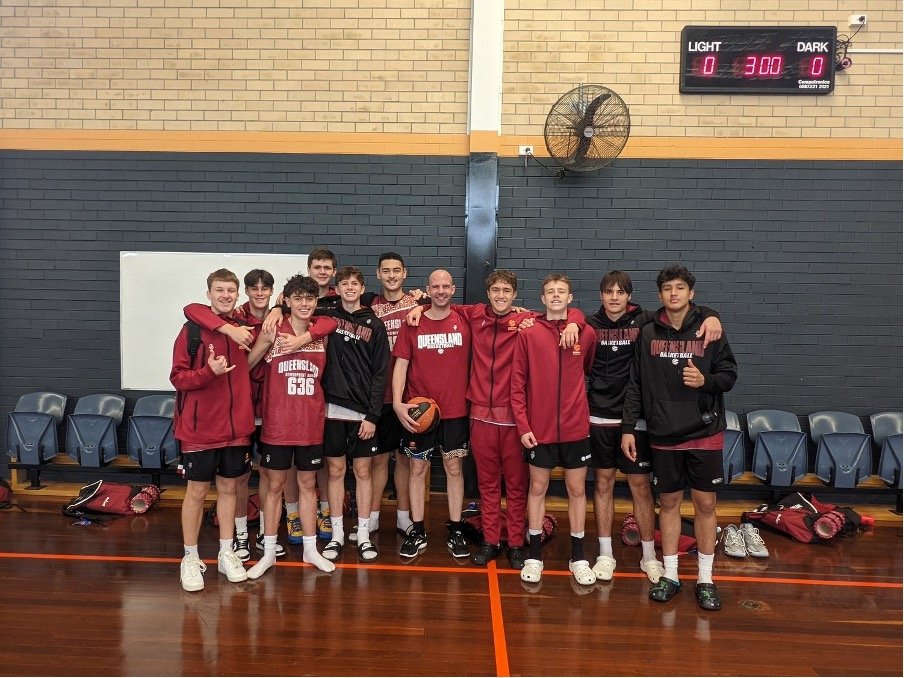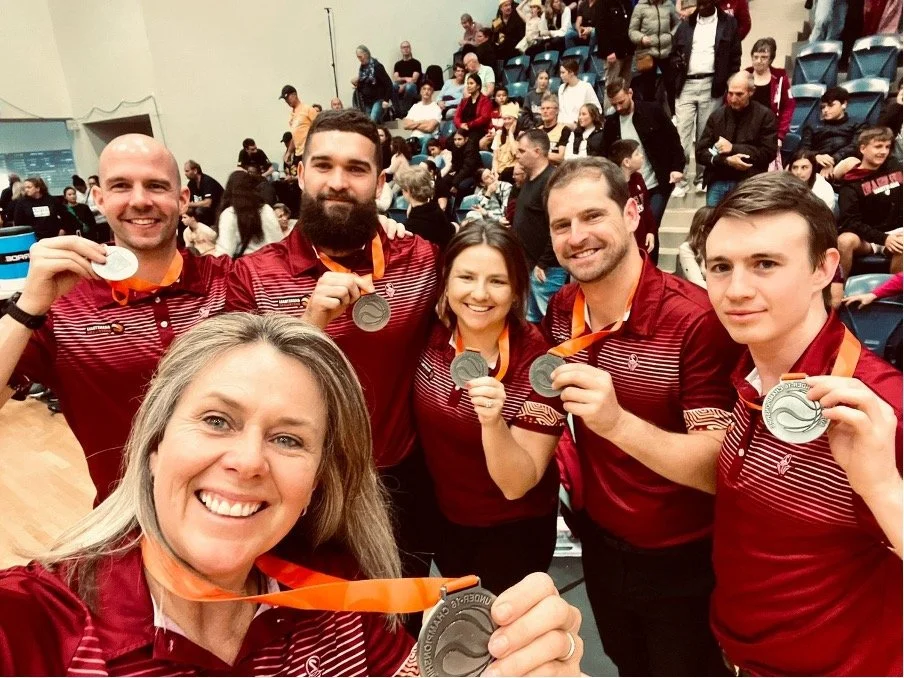Trip to the U16’s Australian Basketball Championship 2022
Silver medallists.
In July 2022, we attended the U16’s Australian Basketball Championships as the osteopath for the Queensland teams.
Our role for this included assessing in-game injuries, taping pre-existing injuries, guiding players through warm-up and cool-down routines, and providing advice and treatment for pain that the players noticed developing throughout the tournament.
How did we go?
We won silver! We were undefeated in our pool stage which included a brave win against Vic Metro (always the team to beat), who would go on to beat us in the gold medal match in front of a large crowd packed into Warwick stadium.
What was the day-to-day like?
We had nine straight days of competition. To keep the boys focused, every day had quite a full and consistent routine. This involved a team walk along the foreshore each morning, an hour of training to learn key offensive sequences and defensive strategies, a film session to analyse our opponent’s strengths and weaknesses, the basketball match for that day, a post-game swim, and a stretching routine before the players went to bed.
What injuries did we see?
Thankfully we avoided any major in-game injuries. Many sporting injuries are simply a matter of chance; however, it was a particularly resilient group of players who moved well, made smart decisions on the court, and dedicated time to looking after their bodies off the court.
Two players had injuries leading into the tournament which were at risk of provocation, though despite both playing high minutes they were able to stay on the court the entire tournament.
Below, we’ll briefly discuss some of the injuries we encountered, and that are common in basketball players.
Final training session before the gold medal match. These kids are tall!
Osteitis pubis
Osteitis pubis is a chronic inflammatory state of the pubic symphysis and surrounding tissues, presenting as pain in the groin and lower abdomen. It generally develops gradually throughout a season and may escalate to a point where the affected athlete will lose a degree of power and speed with their on-court movements. Thankfully, our player had already been rehabilitating this injury, and whilst his pain returned midway through the tournament, he was able to play full minutes.
Lateral ankle sprain
The most common injury amongst basketball players, ankle sprains can vary widely in their severity and recovery time frame. Two of our players required taping each game for their ankles, and many others wore braces as a precaution. Once you’ve sprained ankle ligaments once, the likelihood of re-injury is reasonably high, so having a coordinated and strong lower body is essential.
One of our girls sprained her ankle on day three of competition and was playing again by day five. The key to returning to the court is early mobilisation and loading- once serious injury has been excluded.
Acute wry neck
Many of you are familiar with this experience- you wake up and without any warning you can’t turn your head to one side. This happened with one of our big guys - probably due in part to the incredibly thin pillows the hotel provided for his 6-foot 9 frame. Fortunately, his pain was far more noticeable at rest than it was with activity, so we were able to get him comfortable enough to play. After further treatment at quarter time, he was completely pain free. The take home message is that early intervention and continued activity can be quite restorative for this condition, although many episodes will pass within a few days if left alone.
Thumb sprain (collateral ligaments)
Finger injuries are incredibly common in basketball. Two of our players had their thumbs overstretched when contending for the ball. Both resulted in collateral ligaments sprains. There was not excessive laxity and with rigid taping they could train pain free, so we allowed them to play.
A VERY important consideration with thumb injuries is when the pain presents at the very base of the thumb, close to the wrist. There is a bone here called the scaphoid and if there’s a delay in diagnosing a fracture of this bone, then outcomes are quite poor (non-union). This is due to its limited blood supply.
The other very common injuries in basketball are those that affect the knee. We were quite fortunate to not experience any of these, though they are more common in the older age groups. I’m also surprised that we didn’t have any other finger injuries.
We had a great time over there with the playing group and coaching staff, and look forward to doing this again!



